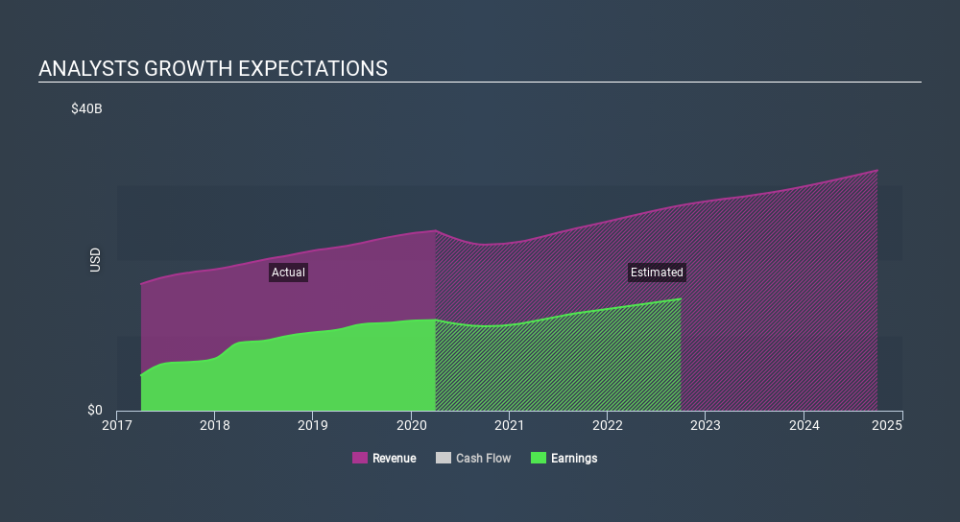Analysts Are Updating Their Visa Inc. (NYSE:V) Estimates After Its Second-Quarter Results

The quarterly results for Visa Inc. (NYSE:V) were released last week, making it a good time to revisit its performance. Visa reported US$5.9b in revenue, roughly in line with analyst forecasts, although statutory earnings per share (EPS) of US$1.38 beat expectations, being 2.3% higher than what the analysts expected. This is an important time for investors, as they can track a company's performance in its report, look at what experts are forecasting for next year, and see if there has been any change to expectations for the business. So we gathered the latest post-earnings forecasts to see what estimates suggest is in store for next year.
Check out our latest analysis for Visa
Taking into account the latest results, the current consensus, from the 31 analysts covering Visa, is for revenues of US$22.0b in 2020, which would reflect a discernible 7.8% reduction in Visa's sales over the past 12 months. Statutory earnings per share are expected to reduce 8.5% to US$5.09 in the same period. In the lead-up to this report, the analysts had been modelling revenues of US$22.7b and earnings per share (EPS) of US$5.38 in 2020. It's pretty clear that pessimism has reared its head after the latest results, leading to a weaker revenue outlook and a small dip in earnings per share estimates.
The analysts made no major changes to their price target of US$199, suggesting the downgrades are not expected to have a long-term impact on Visa'svaluation. There's another way to think about price targets though, and that's to look at the range of price targets put forward by analysts, because a wide range of estimates could suggest a diverse view on possible outcomes for the business. Currently, the most bullish analyst values Visa at US$220 per share, while the most bearish prices it at US$166. This is a very narrow spread of estimates, implying either that Visa is an easy company to value, or - more likely - the analysts are relying heavily on some key assumptions.
Taking a look at the bigger picture now, one of the ways we can understand these forecasts is to see how they compare to both past performance and industry growth estimates. We would highlight that sales are expected to reverse, with the forecast 7.8% revenue decline a notable change from historical growth of 13% over the last five years. By contrast, our data suggests that other companies (with analyst coverage) in the same industry are forecast to see their revenue grow 11% annually for the foreseeable future. So although its revenues are forecast to shrink, this cloud does not come with a silver lining - Visa is expected to lag the wider industry.
The Bottom Line
The biggest concern is that the analysts reduced their earnings per share estimates, suggesting business headwinds could lay ahead for Visa. Unfortunately, they also downgraded their revenue estimates, and our data indicates revenues are expected to perform worse than the wider industry. Even so, earnings per share are more important to the intrinsic value of the business. The consensus price target held steady at US$199, with the latest estimates not enough to have an impact on their price targets.
Following on from that line of thought, we think that the long-term prospects of the business are much more relevant than next year's earnings. We have forecasts for Visa going out to 2024, and you can see them free on our platform here.
It is also worth noting that we have found 1 warning sign for Visa that you need to take into consideration.
If you spot an error that warrants correction, please contact the editor at editorial-team@simplywallst.com. This article by Simply Wall St is general in nature. It does not constitute a recommendation to buy or sell any stock, and does not take account of your objectives, or your financial situation. Simply Wall St has no position in the stocks mentioned.
We aim to bring you long-term focused research analysis driven by fundamental data. Note that our analysis may not factor in the latest price-sensitive company announcements or qualitative material. Thank you for reading.

 Yahoo Finance
Yahoo Finance 
